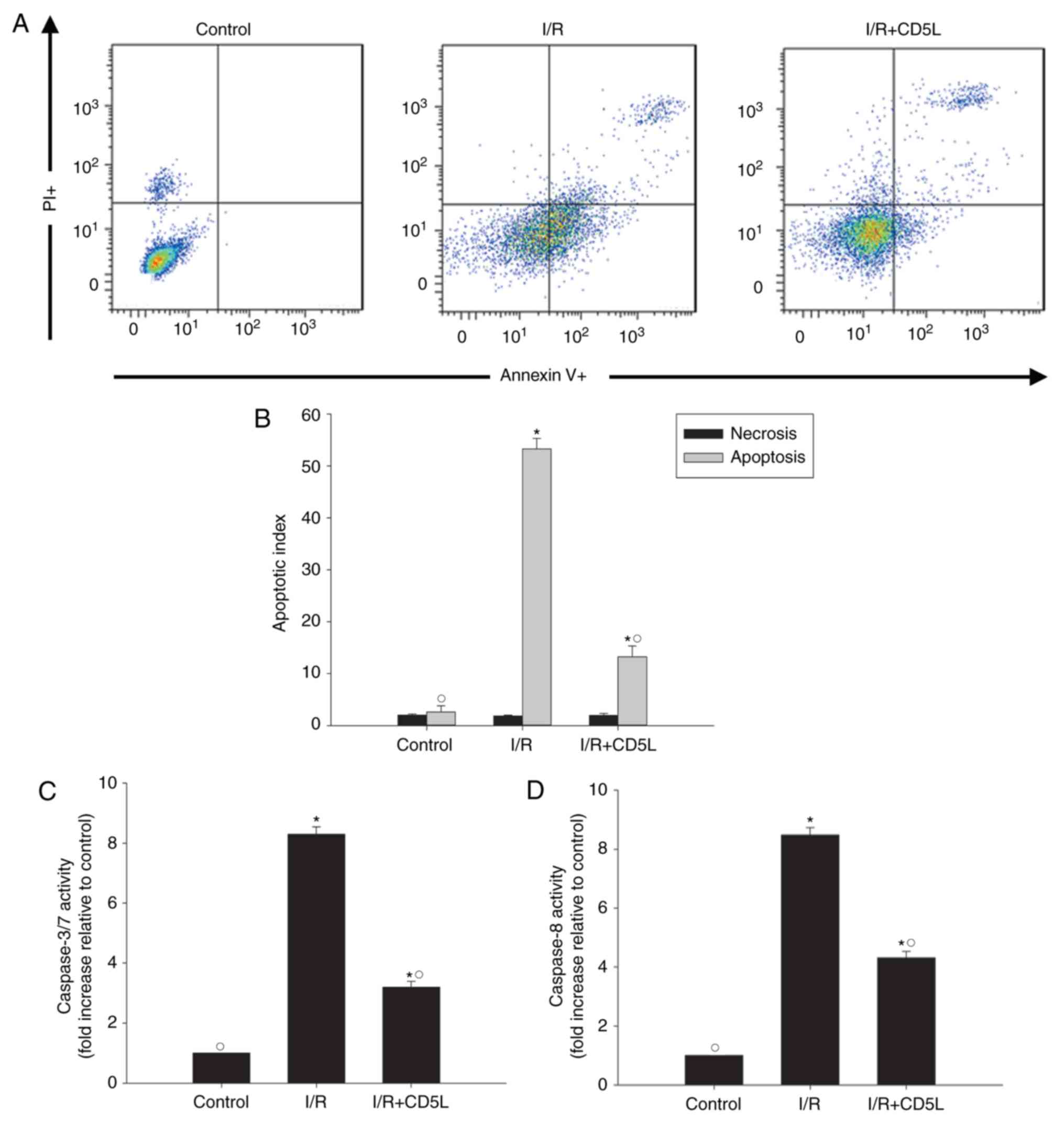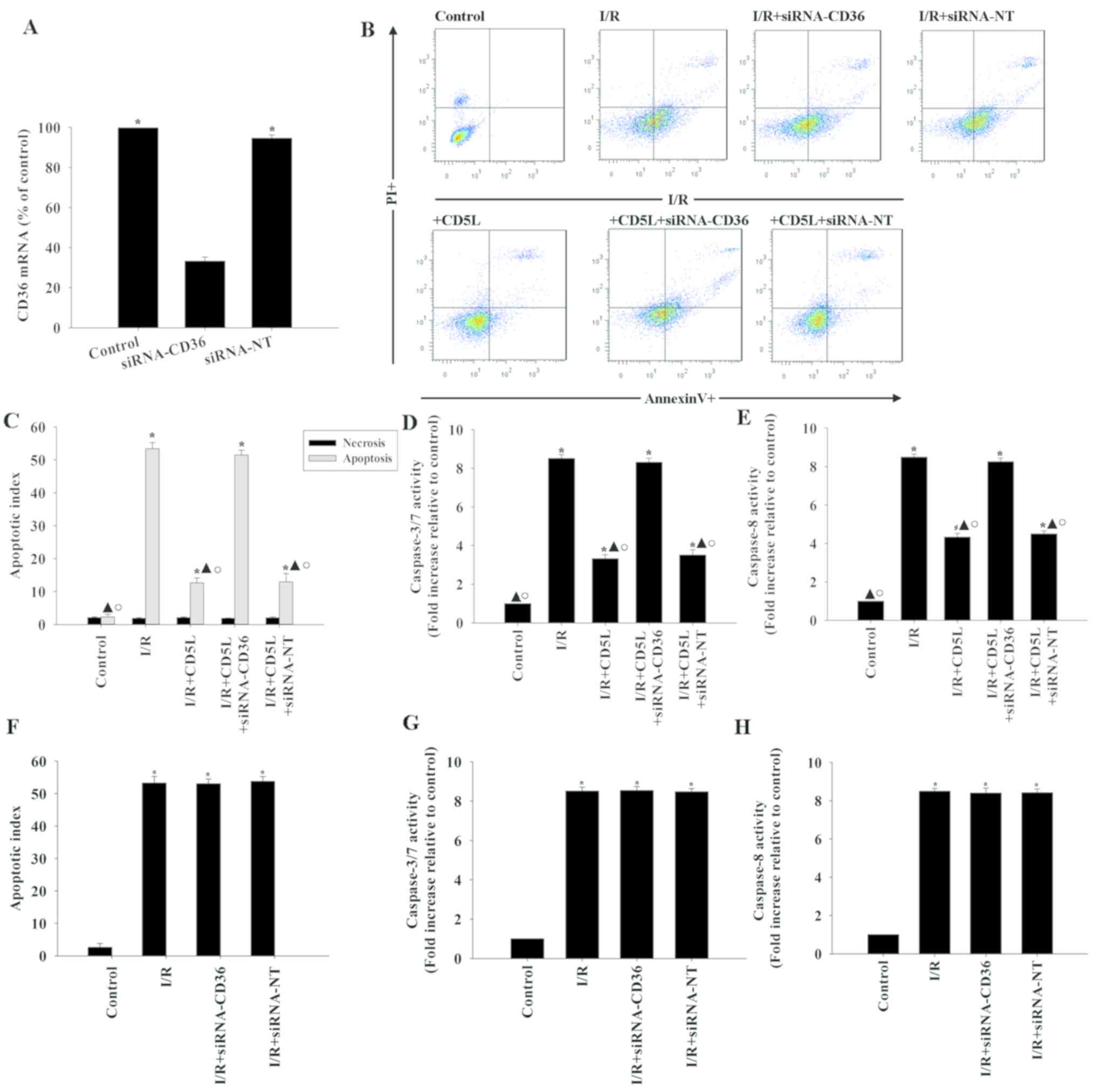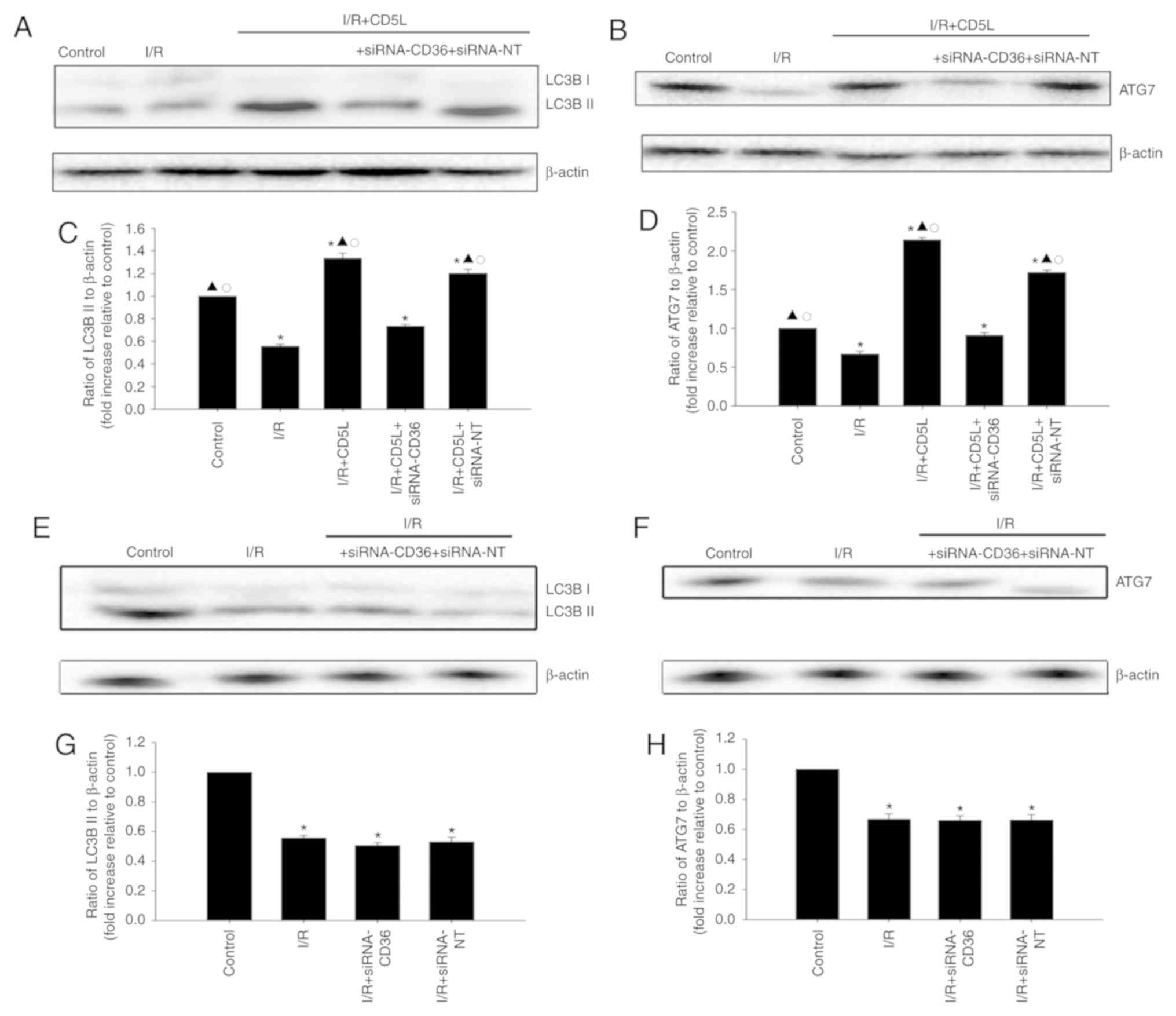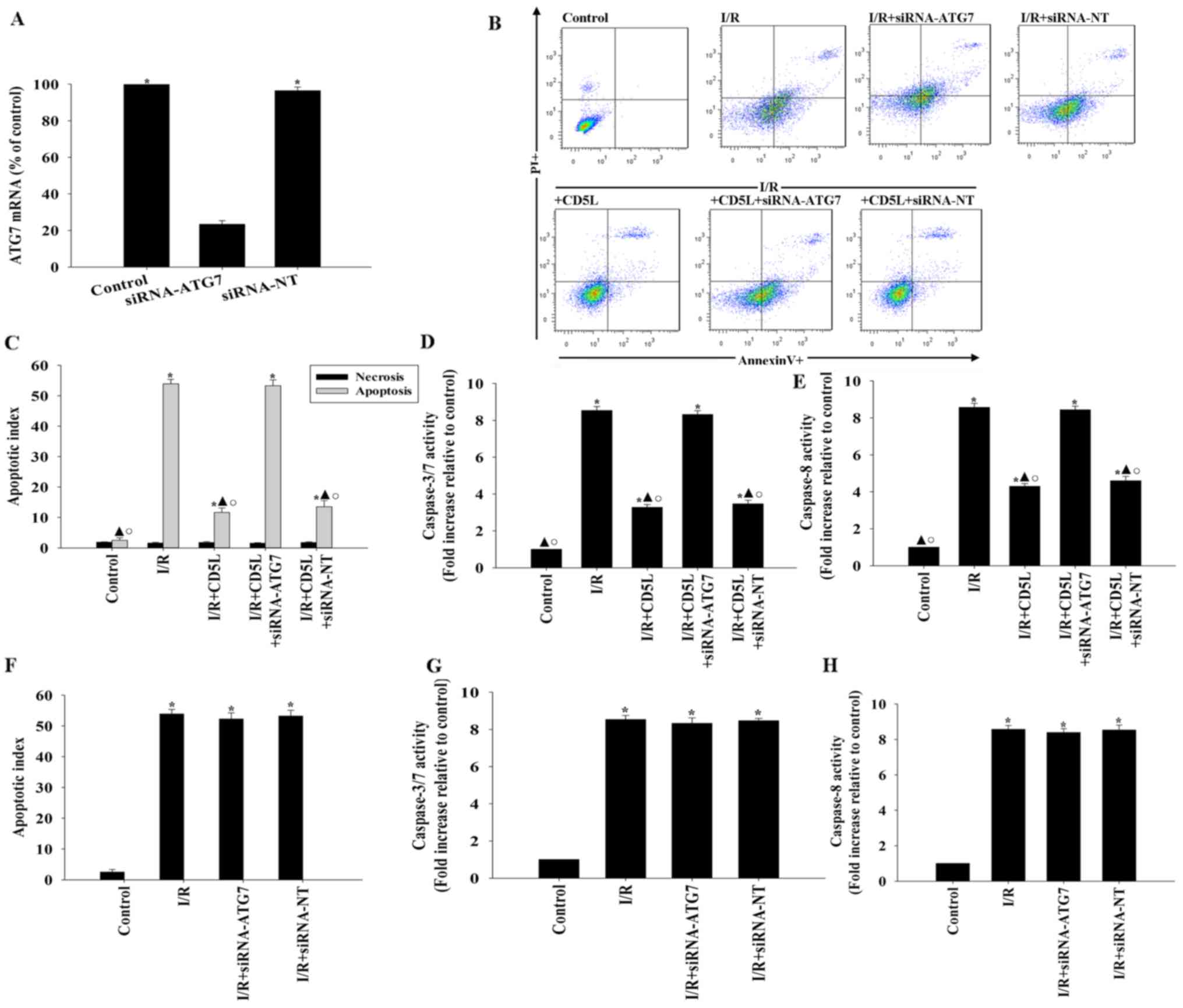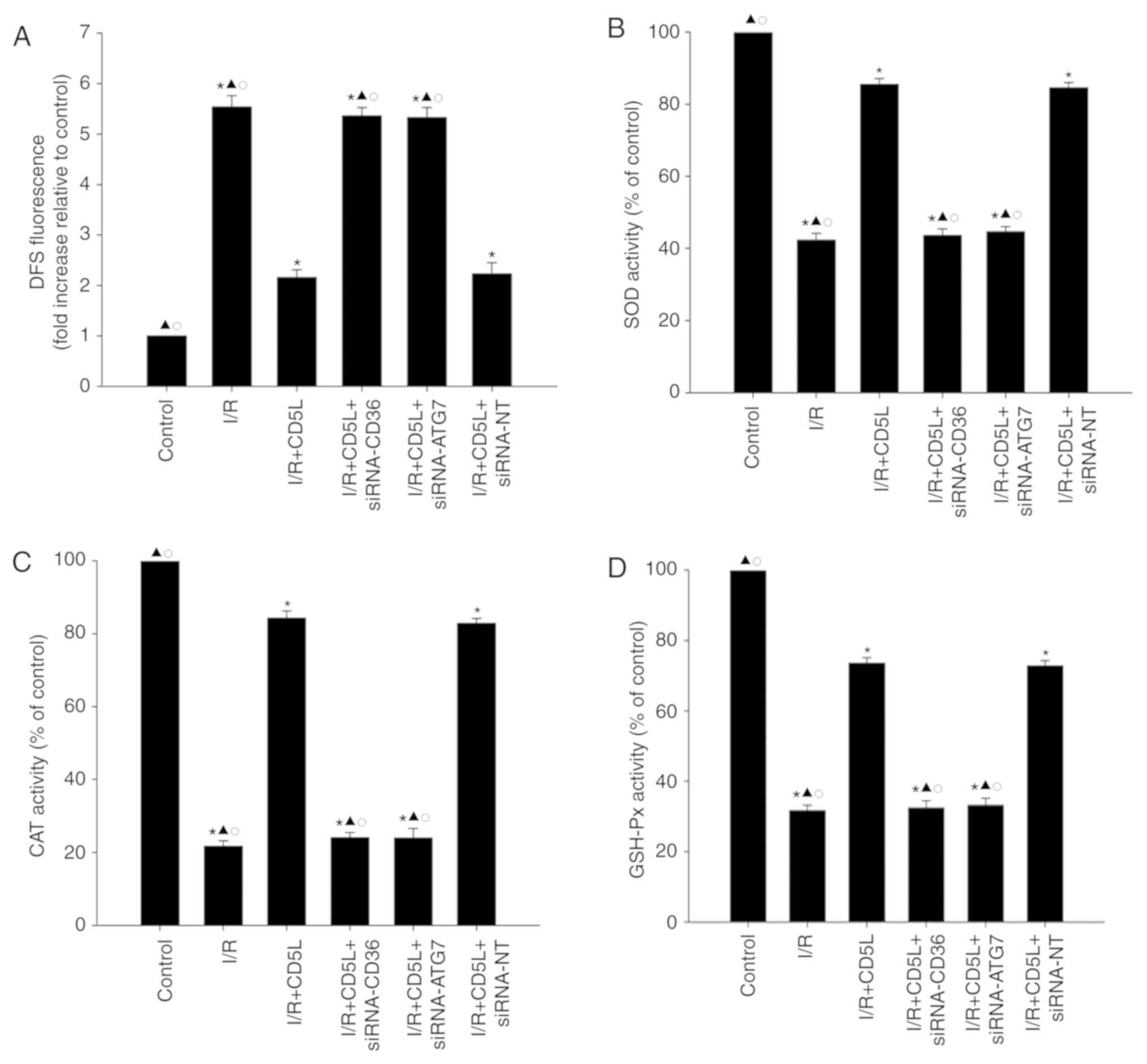|
1
|
Starlinger P, Assinger A, Haegele S, Wanek
D, Zikeli S, Schauer D, Birner P, Fleischmann E, Gruenberger B,
Brostjan C and Gruenberger T: Evidence for serotonin as a relevant
inducer of liver regeneration after liver resection in humans.
Hepatology. 60:257–266. 2014.PubMed/NCBI View Article : Google Scholar
|
|
2
|
Schiergens TS, Stielow C, Schreiber S,
Hornuss C, Jauch KW, Rentsch M and Thasler WE: Liver resection in
the elderly: Significance of comorbidities and blood loss. J
Gastrointest Surg. 18:1161–1170. 2014.PubMed/NCBI View Article : Google Scholar
|
|
3
|
Duval H, Mbatchi SF, Grandadam S, Legendre
C, Loyer P, Ribault C, Piquet-Pellorce C, Guguen-Guillouzo C,
Boudjema K and Corlu A: Reperfusion stress induced during
intermittent selective clamping accelerates rat liver regeneration
through JNK pathway. J Hepatol. 52:560–569. 2010.PubMed/NCBI View Article : Google Scholar
|
|
4
|
Olthof PB, Reiniers MJ, Dirkes MC, Gulik
TMV and Golen RFV: Protective mechanisms of hypothermia in liver
surgery and transplantation. Mol Med. 21:833–846. 2016.PubMed/NCBI View Article : Google Scholar
|
|
5
|
Castellaneta A, Yoshida O, Kimura S,
Yokota S, Geller DA, Murase N and Thomson AW: Plasmacytoid
dendritic cell-derived IFN-α promotes murine liver
ischemia/reperfusion injury by induction of hepatocyte IRF-1.
Hepatology. 60:267–277. 2014.PubMed/NCBI View Article : Google Scholar
|
|
6
|
Zuo S, Kong D, Wang C, Liu J, Wang Y, Wan
Q, Yan S, Zhang J, Tang J, Zhang Q, et al: CRTH2 promotes
endoplasmic reticulum stress-induced cardiomyocyte apoptosis
through m-calpain. EMBO Mol Med. 10(e8237)2018.PubMed/NCBI View Article : Google Scholar
|
|
7
|
Sun P, Zhang P, Wang PX, Zhu LH, Du Y,
Tian S, Zhu X and Li H: Mindin deficiency protects the liver
against ischemia/reperfusion injury. J Hepatol. 63:1198–1211.
2015.PubMed/NCBI View Article : Google Scholar
|
|
8
|
Rao J, Qian X, Li G, Pan X, Zhang C, Zhang
F, Zhai Y, Wang X and Lu L: ATF3-mediated NRF2/HO-1 signaling
regulates TLR4 innate immune responses in mouse liver
ischemia/reperfusion injury. Am J Transplant. 15:76–87.
2015.PubMed/NCBI View Article : Google Scholar
|
|
9
|
Zhang Y, Liu X, She ZG, Jiang DS, Wan N,
Xia H, Zhu XH, Wei X, Zhang XD and Li H: Interferon regulatory
factor 9 is an essential mediator of heart dysfunction and cell
death following myocardial ischemia/reperfusion injury. Basic Res
Cardiol. 109(434)2014.PubMed/NCBI View Article : Google Scholar
|
|
10
|
Ozawa T, Maehara N, Kai T, Arai S and
Miyazaki T: Dietary fructose-induced hepatocellular carcinoma
development manifested in mice lacking apoptosis inhibitor of
macrophage (AIM). Genes Cells. 21:1320–1332. 2016.PubMed/NCBI View Article : Google Scholar
|
|
11
|
Sanjurjo L, Aran G, Roher N, Valledor AF
and Sarrias MR: AIM/CD5L: A key protein in the control of immune
homeostasis and inflammatory disease. J Leukoc Biol. 98:173–184.
2015.PubMed/NCBI View Article : Google Scholar
|
|
12
|
Aran G, Sanjurjo L, Bárcena C, Simon-Coma
M, Téllez É, Vázquez-Vitali M, Garrido M, Guerra L, Díaz E,
Ojanguren I, et al: CD5L is upregulated in hepatocellular carcinoma
and promotes liver cancer cell proliferation and antiapoptotic
responses by binding to HSPA5 (GRP78). FASEB J. 32:3878–3891.
2018.PubMed/NCBI View Article : Google Scholar
|
|
13
|
Wang C, Yosef N, Gaublomme J, Wu C, Lee Y,
Clish CB, Kaminski J, Xiao S, Meyer Zu Horste G, Pawlak M, et al:
CD5L/AIM regulates lipid biosynthesis and restrains Th17 cell
pathogenicity. Cell. 163:1413–1427. 2015.PubMed/NCBI View Article : Google Scholar
|
|
14
|
Xiao J, Ke ZP, Shi Y, Zeng Q and Cao Z:
The cardioprotective effect of thymoquinone on ischemia-reperfusion
injury in isolated rat heart via regulation of apoptosis and
autophagy. J Cell Biochem. 119:7212–7217. 2018.PubMed/NCBI View Article : Google Scholar
|
|
15
|
Li X, Huang Q, Wang M, Yan X, Song X, Ma
R, Jiang R, Zhao D and Sun L: Compound K inhibits
autophagy-mediated apoptosis through activation of the PI3K-Akt
signaling pathway thus protecting against ischemia/reperfusion
injury. Cell Physiol Biochem. 47:2589–2601. 2018.PubMed/NCBI View Article : Google Scholar
|
|
16
|
Sanjurjo L, Amézaga N, Aran G,
Naranjo-Gómez M, Arias L, Armengol C, Borràs FE and Sarrias MR: The
human CD5L/AIM-CD36 axis: A novel autophagy inducer in macrophages
that modulates inflammatory responses. Autophagy. 11:487–502.
2015.PubMed/NCBI View Article : Google Scholar
|
|
17
|
van Golen RF, van Gulik TM and Heger M:
Mechanistic overview of reactive species-induced degradation of the
endothelial glycocalyx during hepatic ischemia/reperfusion injury.
Free Radic Biol Med. 52:1382–1402. 2012.PubMed/NCBI View Article : Google Scholar
|
|
18
|
van Golen RF, van Gulik TM and Heger M:
The sterile immune response during hepatic ischemia/reperfusion.
Cytokine Growth Factor Rev. 23:69–84. 2012.PubMed/NCBI View Article : Google Scholar
|
|
19
|
de Graaf W, Heger M, Spruijt O, Maas A, de
Bruin K, Hoekstra R, Bennink RJ and van Gulik TM: Quantitative
assessment of liver function after ischemia-reperfusion injury and
partial hepatectomy in rats. J Surg Res. 172:85–94. 2012.PubMed/NCBI View Article : Google Scholar
|
|
20
|
Sanjurjo L, Aran G, Téllez É, Amézaga N,
Armengol C, López D, Prats C and Sarrias MR: CD5L promotes M2
macrophage polarization through autophagy-mediated upregulation of
ID3. Front Immunol. 9(480)2018.PubMed/NCBI View Article : Google Scholar
|
|
21
|
Biel TG, Lee S, Flores-Toro JA, Dean JW,
Go KL, Lee MH, Law BK, Law ME, Dunn WA Jr, Zendejas I, et al:
Sirtuin 1 suppresses mitochondrial dysfunction of ischemic mouse
livers in a mitofusin 2-dependent manner. Cell Death Differ.
23:279–290. 2016.PubMed/NCBI View Article : Google Scholar
|
|
22
|
Yuan J, Chen M, Xu Q, Liang J, Chen R,
Xiao Y, Fang M and Chen L: Effect of the diabetic environment on
the expression of MiRNAs in endothelial cells: Mir-149-5p
restoration ameliorates the high glucose-induced expression of
TNF-α and ER stress markers. Cell Physiol Biochem. 43:120–135.
2017.PubMed/NCBI View Article : Google Scholar
|
|
23
|
Liu Y, Xiong Y, Xing F, Gao H, Wang X, He
L, Ren C, Liu L, So KF and Xiao J: Precise regulation of miR-210 is
critical for the cellular homeostasis maintenance and
transplantation efficacy enhancement of mesenchymal stem cells in
acute liver failure therapy. Cell Transplant. 26:805–820.
2017.PubMed/NCBI View Article : Google Scholar
|
|
24
|
Livak KJ and Schmittgen TD: Analysis of
relative gene expression data using real-time quantitative PCR and
the 2(-Delta Delta C(T)) method. Methods. 25:402–408.
2001.PubMed/NCBI View Article : Google Scholar
|
|
25
|
Szabó K, Gesztelyi R, Lampé N, Kiss R,
Remenyik J, Pesti-Asbóth G, Priksz D, Szilvássy Z and Juhász B:
Fenugreek (trigonella foenum-graecum) seed flour and diosgenin
preserve endothelium-dependent arterial relaxation in a rat model
of early-stage metabolic syndrome. Int J Mol Sci.
19(E798)2018.PubMed/NCBI View Article : Google Scholar
|
|
26
|
Guo WZ, Fang HB, Cao SL, Chen SY, Li J,
Shi JH, Tang HW, Zhang Y, Wen PH, Zhang JK, et al: Steap3
deficiency in hepatocytes protects the liver against
ischemia/reperfusion injury by suppressing TAK1. Hepatology: Aug 8,
2019 (Epub ahead of print).
|
|
27
|
Geng J and Klionsky DJ: The Atg8 and Atg12
ubiquitin-like conjugation systems in macroautophagy ‘Protein
modifications: Beyond the usual suspects’ review series. EMBO Rep.
9:859–864. 2008.PubMed/NCBI View Article : Google Scholar
|
|
28
|
Mu H and Wang Y: Collagen peptide modified
carboxymethyl cellulose as both antioxidant drug and carrier for
drug delivery against retinal ischaemia/reperfusion injury. J Cell
Mol Med. 22:5008–5019. 2018.PubMed/NCBI View Article : Google Scholar
|
|
29
|
Abt P, Crawford M, Desai N, Markmann J,
Olthoff K and Shaked A: Liver transplantation from controlled
non-heart-beating donors: An increased incidence of biliary
complications. Transplantation. 75:1659–1663. 2003.PubMed/NCBI View Article : Google Scholar
|
|
30
|
Jaeschke H and Lemasters JJ: Apoptosis
versus oncotic necrosis in hepatic ischemia/reperfusion injury.
Gastroenterology. 125:1246–1257. 2003.PubMed/NCBI View Article : Google Scholar
|
|
31
|
Bilzer M and Gerbes AL: Preservation
injury of the liver: Mechanisms and novel therapeutic strategies. J
Hepatol. 32:508–515. 2000.PubMed/NCBI View Article : Google Scholar
|
|
32
|
Gebe JA, Kiener PA, Ring HZ, Li X, Francke
U and Aruffo A: Molecular cloning, mapping to human chromosome 1
q21-q23, and cell binding characteristics of Spalpha, a new member
of the scavenger receptor cysteine-rich (SRCR) family of proteins.
J Biol Chem. 272:6151–6158. 1997.PubMed/NCBI View Article : Google Scholar
|
|
33
|
Li Y, Qu P, Wu L, Li B, Du H and Yan C:
Api6/AIM/Spα/CD5L overexpression in alveolar type II epithelial
cells induces spontaneous lung adenocarcinoma. Cancer Res.
71:5488–5499. 2011.PubMed/NCBI View Article : Google Scholar
|
|
34
|
Zou T, Garifulin O, Berland R and
Boyartchuk VL: Listeria monocytogenes infection induces prosurvival
metabolic signaling in macrophages. Infect Immun. 79:1526–1535.
2011.PubMed/NCBI View Article : Google Scholar
|
|
35
|
Chun SK, Lee S, Flores-Toro J, U RY, Yang
MJ, Go KL, Biel TG, Miney CE, Pierre Louis S, Law BK, et al: Loss
of sirtuin 1 and mitofusin 2 contributes to enhanced
ischemia/reperfusion injury in aged livers. Aging Cell.
17(e12761)2018.PubMed/NCBI View Article : Google Scholar
|
|
36
|
Tan R, Tian H, Yang B, Zhang B, Dai C, Han
Z, Wang M, Li Y, Wei L, Chen D, et al: Autophagy and Akt in the
protective effect of erythropoietin helix B surface peptide against
hepatic ischaemia/reperfusion injury in mice. Sci Rep.
8(14703)2018.PubMed/NCBI View Article : Google Scholar
|
|
37
|
Jaeschke H: Molecular mechanisms of
hepatic ischemia-reperfusion injury and preconditioning. Am J
Physiol Gastrointest Liver Physiol. 284:G15–G26. 2003.PubMed/NCBI View Article : Google Scholar
|
|
38
|
Nishida K, Kyoi S, Yamaguchi O, Sadoshima
J and Otsu K: The role of autophagy in the heart. Cell Death
Differ. 16:31–38. 2009. View Article : Google Scholar
|















